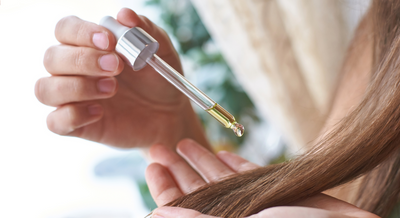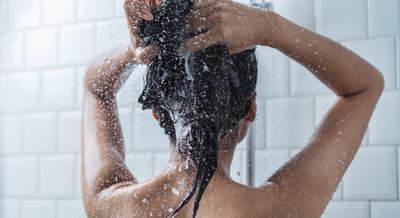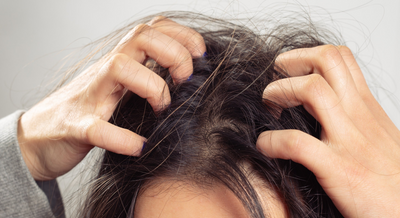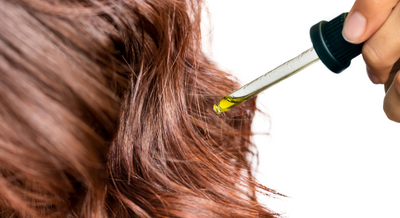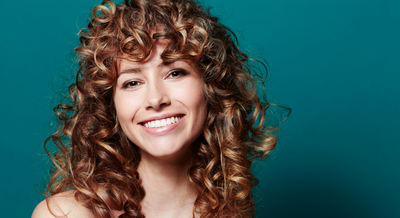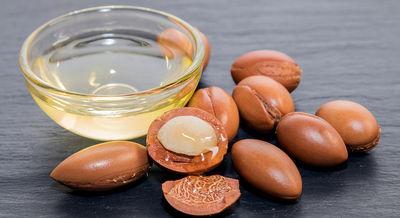The term “healthy hair” gets thrown around all the time in the world of hair care, but what does that term actually mean? Typically, we associate “healthy hair” with things like softness and shine, things are easily observable and obvious to recognize.
And while each of those things can be symptoms of healthy hair, there is much more to hair health than these attributes. Although it can be easy to visit a beauty supply store and stock up on all kinds of products that boast claims of “boosting hair health”, the best way to really maximize your hair’s health is by truly understanding the science and the various factors at play.
While you don’t need to a have PhD in order to understand basic hair health fundamentals, it’s nice to have a basic understanding of the hair structure and how hair care products actually work. To save you years of studying, we’ve compiled a helpful guide that gives you a general understanding of hair health and the science behind it. With this knowledge at your disposal, you’ll be able to easily construct a hair care routine that maximizes the health of your hair, all while knowing which products are truly worth investing in!
What is Hair?
Hair, in basic terms, is a bundle of proteins that grows out of socket-like cavities in the skin, which are known as hair follicles. Inside of each hair follicle lies what is known as the hair bulb, from which the hair shaft, the visible portion of hair above the scalp, grows out of. In a sense, this looks quite similar to a seed being planted in a garden, with the pocket of dirt being the hair follicle, the seed being the hair bulb, and the hair shaft being the stem of the plant that grows out. To extend this metaphor further, blood vessels within the scalp grow upwards into the hair bulb, supplying it with nutrients much in the same way that roots deep within the earth provide sustenance to plants.
In terms of the hair shaft itself, its composition includes more than 95% keratin, a protein produced by the body, as well as dozens of amino acids such as proline and leucine. These proteins and amino acids create connecting bonds, which result in the formation of three distinct layers within the hair shaft:
- Medulla layer: the inside layer of the hair, this typically consists of soft, fragile cells and air pockets
- Cortex layer: the middle layer of the hair, this consists of the majority of the hair structure and is responsible for maintaining structure and body
- Cuticle layer: the outer layer of the hair, this is marked by roof-tile shaped scales that are responsible for protecting the cortex layer
Healthy Hair and Moisture
Much like you need water to keep your plants healthy and alive, so too does your hair rely on moisture and hydration to stay at its best. On a scientific level, your hair requires this moisture to maintain its various keratin and amino acid bonds within the cortex layer and keep its structural integrity intact. On an appearance-based level, this moisture is crucial to flawless-looking hair:
- Thick, bodacious hair: when water is absorbed by the hair shaft, it swells outward and becomes thicker, leading to the appearance of hair fullness and body
- Frizz and Flyaways: when the hair shaft is too dry, it creates static electricity, causing individual hairs to shoot off into various directions, resulting in pesky frizz
- Manageability and Styling: hair shafts that are wet are able to stretch to a great degree without breakage, allowing for easy manipulation and styling potential
As you can see, healthy hair is moisturized hair, and this moisture is crucial for having hair that looks and moves the way we want it to. Clearly, in order to maintain our hair health we need to keep our hair as moisturized as humanly possible. But how can we go about this?
It’s All in The Cuticle:
We previously discussed how the hair is comprised of a three-layer structure, with the cuticle forming an outer protective layer. In healthy hair, the scale-shaped cells that comprise the cuticle layer lie flat and uniform to provide a sort of water-proof shield for the cortex layer, which is incredibly porous and incapable of holding moisture on its own. Given that we just discussed how maintaining moisture levels is crucial to hair health, it goes to reason that maintaining a flat cuticle layer is one of the primary keys towards maintaining healthy hair.
Unfortunately, however, a variety of factors can lead to the raising of the cuticle layer, such as:
- Excessive heat styling
- Harsh chemical treatments
- Drastic fluctuations in humidity
- Improper brushing or combing techniques
- Stripping shampoos or excessive hair washing
Any combination of these factors can cause the cuticle layer to lift, allowing moisture to escape the cortex and result in unhealthy hair. Other symptoms of a raised cuticle include:
- Rough, uneven texture: with the scales of the cuticle raised, the hair feels rough and scratchy as opposed to sleek and smooth
- Dull and lack of luster: shine, which is a universal trait of “healthy hair”, is only possible when the cuticle layer is lying flat, allowing light to reflect off of it
- Directionless hair: when the cuticle layer is raised, hair loses its weight and can move into wildly different directions, making it difficult to style
Structural Damage
At the end of the day, hair health is focused on maintaining the structure of the hair shaft. While a damaged cuticle layer can be frustrating and problematic, it is a treatable condition that can be fixed with a variety of moisturizing treatments and healthy habits. However, allowing the cuticle layer to remain damaged for too long will lead to damage within the inner cortex and medulla layers, which can cause irreversible damage to the bonds that form the hair shaft.
When it comes to a damaged hair shaft, this usually results in a phenomenon known as weathering, which is when hair damage is progressively more prominent near the tips of the hair as opposed to the roots. Because most hair damage is inflicted by styling and washing, it makes sense that the tips, which are keratin bundles that have been exposed to hundreds of hair treatments and washes, are significantly more damaged than the roots, which may have just grown past the scalp within a month or so.
For this reason, it is advised that you frequently get your hair trimmed, as removing damaged split ends is the quickest way to ensuring the entirety of your hair is healthy. Thankfully, if you maintain your cuticle’s health and ensure proper hair moisturization, you’ll never have to worry about this sort of severe damage.



